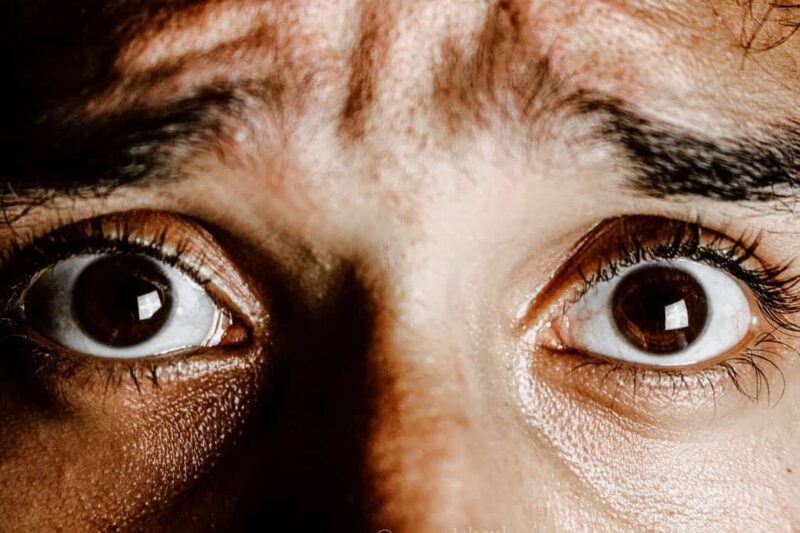
Social Anxiety – It’s Not Shyness, It’s Suffering
When people first think of social anxiety, they might imagine someone at a party, awkwardly standing in a corner, too shy to talk to anyone. But in most cases, that’s really not what’s going on.
Today we’re going to take a closer look at a condition that affects more people than you think as well as various symptoms and other useful information.
What Is Social Anxiety?
The full term is “social anxiety disorder”, but another term is “social phobia.”
It’s an intense, persistent fear of being watched and judged by others. And when we say “persistent” it doesn’t mean for a few hours. Generally, doctors use a diagnosis standard of 6 months. However, using patient history coupled with what they’re going through at that moment, can significantly change this benchmark.
With this fear comes …
- Worry or inability to do simple, daily tasks like talk on the phone, go shopping, work, etc.
- Deep fear of being criticized, judged in any way or even noticed
- Staying away from some or all social activities (even with good friends)
- Going over past situations, thinking of “everything you did wrong”
- Constant worry that you’ll do something embarrassing
- Difficulty doing something when others are watching
- Having low self-esteem and everything that goes with it
- Difficulty making eye contact
- Physical reactions like nausea, racing heart, sweating, trembling, or panic attacks
- (In children) crying, tantrums, or clinging/hiding behind parents
Note: If someone is scared of doing something in front of others (e.g. public speaking), and the fear goes away after, this is usually called “performance anxiety.” It’s sometimes included under this umbrella under the label “specific anxiety disorder”.
For people who suffer from this disorder, common things like entering a room where there are other people or returning an item to a store might feel impossible. Even little things like going outside to walk a dog can feel monumental.
More Common Than You Think
It’s easy to dismiss something like this. But did you know that social phobia is now the THIRD largest mental health problem in the world? The only two things that outnumber it are alcoholism and depression.
Millions of people around the globe suffer from this disorder in one way or another. The other interesting thing is that numbers have only skyrocketed since COVID. After lockdown, people everywhere expressed problems getting back out into society.
The issue is there is still a lot of stigma around mental health. People are often uncomfortable talking about even little things. So, imagine trying to tell someone you care about that you’re having a panic attack in the middle of the supermarket because you’re terrified people are watching and judging everything you do.
Sometimes, people might not even know they are suffering from a social anxiety disorder.
Also, people going through this condition are well aware that their thoughts are unfounded. They know that no one is judging them for wearing sweatpants to the market and using the self-checkout instead of the cashier line. But this is on a logical level. Emotionally, they are breaking down inside and ready to collapse on the floor from hyperventilation.
Social Anxiety Treatments
The good news is that there are many avenues to help someone with this disorder. However, no two people are the same. This means that it might take some maneuvering and experimentation to find what really works for that person.
- Cognitive Behavior Therapy – This is basically identifying negative thought patterns and changing them into neutral or positive ones. It can be done alone, with a therapist, or anyone that provides healthy support.
- Support Groups – They might do group CBT or other forms of help. However, please remember that these places should never force anyone to do anything they’re not comfortable with or ready for. Meaning if the person wants to sit, just listen, and never say a word, then that’s okay.
- Medication – There are far too many out there to list, and they should only be prescribed by a medical professional. But some people have found this route works well too. In general, you’ll find these meds fall under a beta blocker, anti-depressant, or anti-anxiety category.
- Positive Environment – This can be a sub-topic of CBT or support groups, but it’s worth mentioning that creating a calm, positive environment can work wonders. This can include things like getting rid of toxic friends or taking away key stressors. For example, you can order food online instead of having to go outside. This lets you create an environment that helps you make easier baby steps.
Social Anxiety – End Thoughts
The key takeaway to this entire article? Social anxiety disorders might last a few months or even a lifetime, but it’s quite manageable. It’s just a matter of finding the right combination of aids that works for that person. You’re not alone and there is help out there.












